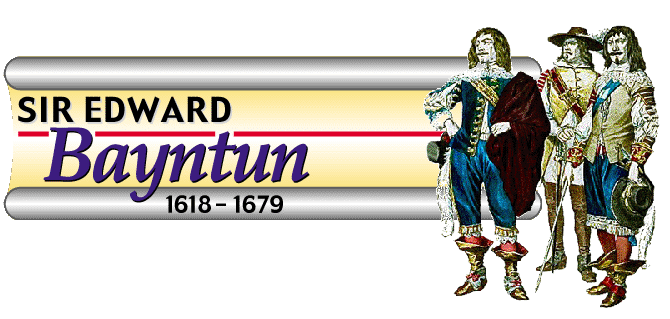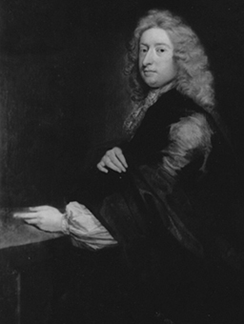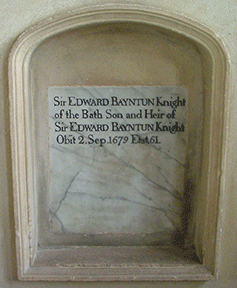
|
Timeline
1629: Charles I dissolved Parliament for the second time and ruled without them for eleven years until they were summoned again in 1640. 1642 - 1648: Civil War begins – Royalists against Parliamentarians – and the King fled north. 1645: Charles I surrendered to the Scottish forces. 1647: Charles I was imprisoned at Hampton Court by Oliver Cromwell's army, but escaped three months later. 1648: Charles I put on trial and charged with treason – for waging war against the English people. 1649: Civil War ends and England is declared a Republic. On 30th January, Charles I was beheaded outside his Banqueting House – the new Stuart Palace of Whitehall and later buried in St. George’s Chapel, Windsor Castle. The same month, the monarchy was abolished and Oliver Cromwell was appointed Commonwealth Ruler of England. 1651: Charles – the second son of Charles I (and future King Charles II) tried to claim the throne, but was defeated by Oliver Cromwell at the Battle of Worcester and forced to sail for France in exile. 1653: Oliver Cromwell was declared Lord Protector of England and took up residence at Hampton Court Palace. 1654: England was at war with Spain. 1657: Oliver Cromwell was offered the throne of England but declined. 1658: Oliver Cromwell died on 3rd September at Whitehall, London and his son, Richard, became Lord Protector of England, but lacked his father’s qualities. 1660: The Restoration of the Monarchy – Charles II was returned as King of England on 29th May at the age of 30, when Richard Cromwell was forced to flee to France in exile. 1661: Charles II was crowned King of England on 23rd April at Westminster Abbey, Middlesex. |
Portraits
of Sir Edward Bayntun (above) and his sister Anne. The
painting of Sir Edward dates around 1661 shortly after he was
knighted. The other of his younger sister was painted some time
around 1650. Both portraits were lent anonymously in 1959 for
an Exhibition of Old Master Paintings from the private and public
collections of New Zealand at the Auckland City Art Gallery. Edward Bayntun was born at Bromham House, Bromham, in the County of Wiltshire and was baptised on 2nd December 1618. He matriculated at St. John's College, Oxford on 15th January and matriculated 1636 and admitted to Lincoln's Inn in 1638. Returning to Wiltshire, he was first elected in 1639-40 to Parliament as a Member for Devizes. Like his father, a Presbyterian and part of the faction that urged war in Paliament, he joined the Parliamentary army and held the rank of Captain of Horse (Parliamentary) in 1642 and that of Major in 1644. He combined with his military duties, service on Parliamentary Committees and Local Commissions and served as MP for Devizes 1640-1647, 1648, 1654-1655, 1675-1679 and for Calne 1659 and 1660. He was a Member of the Wiltshire Commission of the Peace from 1650 to 1654 and again from 1660 to 1677 as well as acting as a Commissioner with the Scotts army in 1645. After the death of his father in 1657, he inherited the Manor of Bromham at the age of 39. Edward was the second son and heir – the first-born son, named Henry, died aged just two years old in 1619. He was master of a large estate and received rents for his estates in Bromham, Chittoe, Clench, Bremhill, Stanley and Rowden. Sir Edward was present at the Restoration of the Monarchy in 1660 and was appointed Sheriff of Wiltshire in 1664. He was a Justice of the Peace for Wiltshire 1650-1654, 1660-1677 and for Devizes in 1669 and was made High Sheriff of Wiltshire 1664-1665 and at the Restoration of the Monarchy, on 18th April 1661, he was made Knight of the Bath, in preparation for the Coronation of Charles II – the honour was perhaps accorded in recognition of the position which Sir Edward had occupied since his father's death three years earlier, as head of one of the country's most important families. and became Colonel of the Wiltshire militia foot.
His public career, like his family life, met with difficulties in the 1660's. He stood again for election as M.P. For Calne in 1661 but was defeated and did not return to Parliament for 14 years. He remained active in local affairs and upon his return to Parliament in 1675, his re-election period was not a happy one and he lost many Parliamentary friends with his comments on foreign policy. Their first born child, Edward, died as an infant in 1662; a daughter, Elizabeth, died at just five months in 1664 and the same year another son, Henry, was born - who lived to be his father's heir. The birth of their third son, Edward, in 1666, was a happy occasion which prompted Sir Edward to extend an invitation to Thomas Gore of Alderton to dine at his house in Spye Park. The invitation stated that it was his wife's desire, as well as his, to include his company the following Sunday and the occasion was said to be the christening of their new arrival and son. The letter mentioned other dinner guests to include William Glanville of Broad Hinton and Mrs Thynne, his wife's kinswoman. Sadly this child also died at just one year old, but by 1670 Sir Edward and Stuarta had two sons and two daughters living – Henry, Anne (born 1665), Thomas (born 1667) and Lucy (born 1667) - possibly twins. However at this time their marriage had become estranged. In his will, drawn up in January 1670, Sir Edward made no commendation of, or bequest to Stuarta. She was mentioned only in the closing stages of the document, when he appointed a guardian for his children. He appointed his loving friend, George Johnson, a Lawyer, as the Executor of his will and guardian for his children. His will declared that it was his desire that neither his wife, nor any of her relations should have anything to do with the education of his children or the intermeddling with any of their estate. Stuarta, the Lady of Sir. Edward Bayntun, did freely give the Communion cloth to the Parish of Bremhill on the 18th November 1667. In December 1675 clerical hunting led to an altercation in the parish of Heddington. The local vicar, Henry Rogers, was entitled to hunt, having added the living of Leigh de la Mere. He went coursing hare on his land, accompanied by Edward Child, an Oxford M.A. When a hare they were chasing escaped to the land of a tenant of Sir Edward Bayntun, they decided to pursue it. This was a mistake, as they were shortly to discover. It was customary for gentlemen to turn a blind eye when other gentlemen hunted on their land, but Sir Edward was not likely to extend this courtesy to them. Bayntun had ambivalent views about the Anglican clergy and although he was prepared to supplement the income of the minister of his parish of Bromham, he quarrelled with the incumbents of Bremhill over tithes and of Rodbourne Cheney over an annual stipend and repairs to the chancel. He was a puritan and was appointed during the Commonwealth to the commission assessing fitness for the sacrament and was reluctant to prosecute dissenters after the Restoration. As bad luck would have it, Sir Edward and two of his men rode into sight before the two clergymen could return to their own fields, having failed to find the hare. Bayntun sent his servants after the clergymen and they rode up threateningly and demanded "Who gave you authority to course upon my Masters ground?" When Rogers denied that he had been hunting on Bayntun's property, they called him a 'lying priest' and assaulted the minister and his dog, barely avoiding wounding the former seriously. Rogers fled to his house, chased by Bayntun and his men who were shouting threats. They pursued the minister into his house where they abused him and his mother. After threatening to 'pin the impudent black coat to the wall' they finally left. Bayntun's violent treatment of Rogers showed that he had very little respect for the clergy. While his puritan sympathies may have made him less tolerant than other gentry, he nevertheless expressed a common disrespect for their social position. In a deed dated 1677, Sir Edward Bayntun mentions his two capital messuages, or mansion houses of Spye Park and Bremhill. He kept a Journal from 1657-1679, which mainly consisted of farm accounts, rents received from Bremhill and other manors, estate papers and deeds. Today this journal is known as The Commonplace Book of Sir Edward Bayntun of Bromham and can be found in the Records Office at Trowbridge. In 1988 Jane Freeman of the Wiltshire Record Society edited these papers and they were printed in booklet form. On the 3rd of July 1678 his daughter, Anne, died at 13 years of age. Sir Edward was
suffering from a long illness, but remained in local politics until
his death on 2nd September 1679, aged 61. His wife, Stuarta,
died on the 11th November 1680 and is said to have been buried in Egham, Surrey. Sadly there is no portrait
of Stuarta at Longleat House in Wiltshire where there is an extensive
family collection. A note inserted in the Tropenell Cartulary in 1695 indicates that the Manor of Little Chalfield (or West Chalfield) was purchased by Sir Edward Bayntun from Frances Hall and John Hill prior to his death. Some years later his son Thomas and his wife mortgaged the manor to Robina Woodfine and Daniel Germaine for £1,500. This Thomas Bayntun was the legal father of Rachael Bayntun, who inherited the wide estates of John Hall of Bradford and went on to become the Dutchess of Kingston.
The above memorial to Sir Edward, replaced an older one that was against the chancel wall, under a canopy. It was of a female figure, inlaid in brass, having a scroll issuing from the mouth, the letters of which were nearly obliterated. The wording was exactly as above and was with another inscription, on the same scroll, dedicated to his grandson, John Bayntun, obiit 21 April 1716. When Sir Edward Bayntun died he was succeeded by his eldest son and heir Henry Bayntun |






